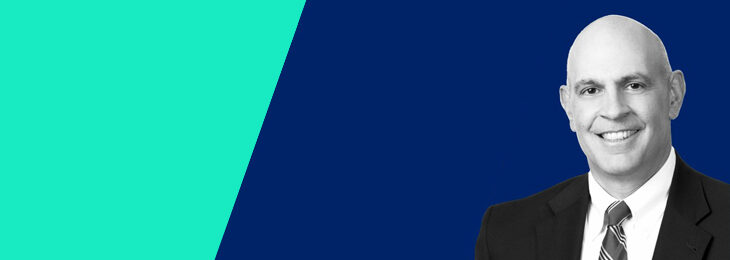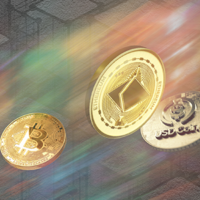
We as a society mark the passage of time and milestones in our lives in five-year increments—such as our 25th wedding anniversary or 50th birthday. This September, America will mark a different kind of anniversary, the 10th anniversary of 9/11. To many, the horrific events of that day, which forever changed the lives of millions, are still clearly etched indelibly in the mind as if it happened yesterday. To the baby-boomer generation it crystallized the emotion and psyche the nation must have felt after Pearl Harbor, something textbooks, movies and written accounts can never fully duplicate.
September 11, 2001, initiated the awakening of the Bank Secrecy Act (BSA) and anti-money laundering (AML) efforts, introducing a new vocabulary into the American lexicon over the course of the ensuing years. Words and phrases such as suspicious activity report (SAR), customer identification program (CIP), know your customer (KYC), hawala, suicide bomber, high value target, unlawful combatant, pre-emptive strike, water boarding, predator drone and sleeper cell are now terms no longer reserved for clandestine discussions at the highest levels of government. Of all those terms, sleeper cell is the one that triggered the government and financial system to mobilize under the fear that in September of 2001, a War of the Worlds similitude had descended upon the United States.
Fear of the Unknown
Sleeper cell is the psychological personification of fear. It is terrorism minus the terrorist act. While suicide bomber brings more outward reactionary fear, people are not quite sure how to react regarding the sleeper cell. The difference between the two is that an act of premeditated violence is not at all unusual in the United States, but the thought of persons living among us for a decade or more, then carrying out that act, can leave a deep emotional scar. The questions will always haunt us. Why couldn't we have discovered them? Why didn't we do more? The idea that at this very moment there may still be numerous individuals in the United States, Canada and Europe, who may one day be called to arms, is not only disconcerting but gives rise to a feeling of complete frustration.
Mission Impossible
We all know that the chances of discovering information from the financial institution side that would lead directly to unearthing a sleeper cell is even greater than looking for the proverbial needle in a haystack. Anyone who tells you otherwise is either hallucinating or trying to impress you. Sleeper cells can be disguised by a decade or more of normal Western culture, or born here and converted over the same period. The original sleeper cell profile of a Middle Eastern man who is a loner, cavorts with prostitutes and either works a menial job or is a student, was a knee-jerk reaction of the moment. Take away ethnicity and the profile fits millions of men. Include ethnicity, plus information that a financial institution is privy to, and the targeted audience is narrowed considerably. Finding a potential terrorist; or maybe of equal importance a terrorist sympathizer, requires throwing out the usual AML red flag playbook and transcending the normal reports that scratch the surface of economic crime.
Debit/Credit Card Analysis
Statistical analysis of debit and credit card purchases is perhaps the backbone of consumer product marketing. When combined with deposits and written checks, a bank can draw a profile on an individual that would rival that of an FBI profiler (even information a spouse may not know). One individual who purchases extraordinary amounts of food, personal hygiene products, baby products, pre-paid cell phones or gasoline, is certainly indicative of someone potentially caring for others. If it is a clergyman, for example, it may be nothing more than a noble cause, such as a center for troubled teens. On the other hand, it could also be a sign of harboring people here illegally in the form of servitude, human trafficking or terrorism. It is human nature that in any structure, whether it be a family, the military, or a terrorist cell, that the participants are assigned tasks for the support of the group as a whole.
Cross Address Analysis
Running an address check every six months to see how many individuals (particularly unrelated) are residing in one household can reveal a deleterious situation waiting to happen. Six males living at an address that is either known or commonplace as a one-bedroom apartment should raise questions about what the group is up to. Since many smaller banks have geographical service area restrictions, it could be something as benign as a few close-knit friends trying to cash in on a special promotional CD (certificate of deposit) rate; using the home of one of the participants as cover. It could also be a group involved in a variety of fraudulent schemes, demanding an immediate review of the CIP documents along with an investigation.
Hawala
Discovering someone engaged in hawala is certainly of strong interest to law enforcement. The preponderance of individuals involved in this type of alternative banking are by and large harmless from the standpoint of terrorism, but that is a call best left to law enforcement. Most people engage in hawala to simply send funds to relatives overseas and may have absolutely no banking relationship to begin with. It is the hawaladar (hawala broker) that is the key, with their discovery being the linchpin to a potential gold mine of information. Since many hawaladars operate a legitimate business with traditional banking services, the normal red flags for money laundering apply, such as a deposit followed by an overseas wire transfer for the same amount. Pay particular attention to check deposits unrelated to the business characterized by memo notations that are also unrelated. Personal checks deposited outside the United States may also be indicative of a hawala transaction.
Factored Deposits
Deposits that come into a business account through a factor are extremely unusual but those deposits become even more unusual when the business is not the type of enterprise that would need to engage a factoring service (a cash intensive business for example). Factoring is the sale of accounts receivables at a discount in return for an immediate cash payment. Payments from a factor certainly give the appearance of legitimacy, providing an excellent cover for a criminal enterprise to move money. While the factoring arrangement can be set up as either open or hidden, the end result is that through phony invoicing, or a series of shell companies and/or legitimate companies (which may include the factoring company), a business can disguise its deposits from its financial institution. As mentioned above, the key questions to ask are why would the business in question need to resort to factoring and, of course, how are those deposits being disbursed?
While the death of Osama bin Laden may be euphoric, terrorism has been in existence long before we ever heard of Osama bin Laden. Whether it is airplane hijackings, the Achille Lauro, the Munich Olympics or Entebbe, history has shown that there is never a shortage of evil people waiting to lash out against humanity for whatever delusional reason that possesses them. They all share one thing in common, the need to fund their plots and followers to infiltrate.










